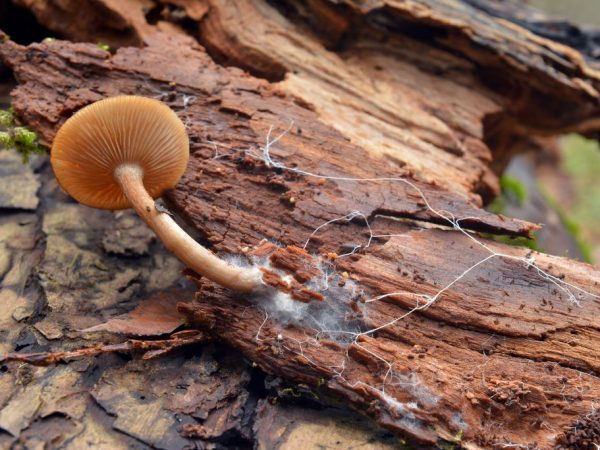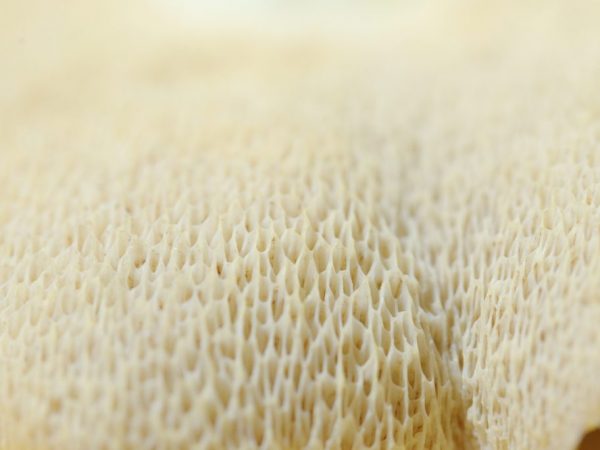Features of the reproduction of mushrooms
To save money and get environmentally friendly products, people grow different crops in their dachas (adapting utility rooms for this), including mushrooms. They are easy to grow both in the garden and indoors. To effectively organize the growing process, you need to understand what the reproduction of mushrooms is and what is the specificity of this process.

Features of the reproduction of mushrooms
Features of the structure of mushrooms
Before talking about the methods of reproduction of mushrooms, you need to understand what these organisms are. They combine some characteristics of animals and plants, and therefore were united into a separate kingdom - Mushrooms. After a long debate, scientists, who could not decide what species they should be attributed to, assigned a separate kingdom to mushrooms.
Initially, this group of organisms lived in the waters of the oceans. After some time, for unknown reasons, they changed their habitat, moving to the forest. They are united with the plant kingdom:
- the ability to reproduce by spores;
- absorptive way of eating;
- the presence of a cell wall;
- the presence of vacuoles in the cell;
- unlimited growth, etc.
With the kingdom of Animals they have in common:
- metabolic product - urea;
- lack of plastids (including chloroplasts);
- heterotrophic nutrition;
- the presence of chitin in the cell wall;
- reserve nutrient - glycogen, etc.
Not everyone has an idea about the structure of the fungus. It consists of mycelium (mycelium, or vegetative body), which plays an important role in the reproduction process, and directly reproductive organs. The mycelium is underground. It is a thin, colorless thread through which nutrition occurs.
It is difficult to find another organism that can adapt so well to environmental conditions.
Mushroom propagation
The reproduction of mushrooms, united in a separate large kingdom, occurs in 3 ways:
- vegetative;
- asexual;
- sexual.
Those. they reproduce with the help of all methods known to science today.
Vegetative breeding method
This method is convenient to use when growing crops in the country, in the basement or on mushroom farms. Its essence lies in the division of the mycelium. Some parts of a certain size are detached from the main vegetative body and placed in an environment where they begin to develop separately. This is the fastest way and is often found in the wild.
A feature of the vegetative propagation of fungi is that in many species arthrospores (oidia) and chlamydospores are formed. These cells give rise to new myceliums. Oidia are formed as a result of the decay of hyphae. Each such cell gives rise to a new mycelium. A feature of chlamydospores is that these cells are covered with a dense membrane, sometimes colored in a color that differs from the color of the mycelium. This membrane stores nutrients that allow the cell to "wait out" adverse conditions.Chlamydospore remains viable for 7-10 years.
But division by the formation of oidia or chlamydospores is not exclusively classified as a vegetative method. It is classified as a cross between vegetative and asexual reproduction of fungi.
Budding occurs when a neoplasm appears on the mycelium, which grows over time and becomes a separate organism. At first, the kidney is microscopic in size. Among higher organisms, budding is rare, but representatives of the lower class (yeast-like, for example) use it often.
Asexual breeding method

It is very difficult to collect planting material.
With asexual method, fungi multiply by microscopic spores. Spore breeding is similar to using seeds, but planting material is more difficult to collect. Spores are carried not only by the wind, although most often they travel with air currents, but they also adhere to the fur of animals. What's interesting is that these microscopic particles don't sink. When they enter a favorable environment, they develop, forming a mycelium.
Spores can form inside or on the surface of the spore-bearing organs. They also differ in structure. Some spores have flagella that allow them to move around and are called zoospores. Others do not have such flagella, they are immobile and are called sporangiospores.
Irina Selyutina (Biologist):
Many lower fungi are characterized by the presence of mobile zoospores. Zoospores develop in sporangia. Other lower fungi are characterized by sporangiospores developing in sporangia. Sporangia sit on special, different from other hyphae - sporangian. They rise upward from the substrate on which they developed. This elevated arrangement of the sporangia facilitates the spread of spores by air currents after the sporangium shell has developed.
Asexual reproduction with the help of conidia has been described for marsupials, basidial, imperfect, and a few lower fungi adapted to terrestrial existence. Conidia are covered with a membrane, they do not have flagella - organs of movement, spreading occurs with the help of air, insects, and humans.
Interestingly, copies of parents with minor mutations grow out of the spores.
Spores are intended only to increase the population.
If you look at the number of representatives of the kingdom, you can see that even with asexual mode of reproduction, significant changes in species occur. They associate this with the fact that several generations grow during the season, each of which has some changes. Ultimately, minor mutations of each generation lead to the emergence of new species.
Sexual reproduction
From the name it is clear that we are talking about a merger process. During sexual reproduction of fungi, male and female cells (gametes) merge. But this happens in the second stage of reproduction. The first stage involves the formation of these cells. In the process of fusion, disputes arise, from which a new organism is formed. With the asexual method, the formation of spores is not expected to merge cells, which is their difference. Cells intended for sexual reproduction may have the same appearance or may differ.
Interestingly, the lower fungi, which reproduce by cell fusion, immediately give rise to sexual spores. Representatives of the upper class first form a mycelium, which is somewhat different from the one from which mushrooms emerge. This method is also typical for marsupial mushrooms. But in them, cell fusion occurs directly inside the bag (asuka). The cell formed inside the bag is capable of division and the formation of new spores.
Interesting Facts
The main role in reproduction in any way is played by the mycelium, which is located underground.If you harvest by cutting off the fruiting body, then the mycelium remains intact, because you left part of the leg in the soil. Within 14-20 days, he is able to grow a new fruiting body filled with spores. If, during collection, the fruit body is pulled out of the ground (attention! Pulled out, not twisted), the integrity of the mycelium is violated. It will take a long time to restore this organ. The duration of recovery depends on the area of the damaged part of the mycelium.
All methods of reproduction are characteristic of molds. Yeasts that do not use oxygen during respiration reproduce vegetatively and sexually, actinomycetes (radiant fungi) - vegetatively and asexually, imperfect ones - sexually. For parasitic fungi, sexual reproduction in the form of somatogamy is characteristic. The dicarion stage can last for years, and for tinder fungi even for decades. Each variety of the mushroom kingdom has properties that are unique to it.
In cap mushrooms, the spores are under the cap (on the lower side of the cap). The part of the fruiting body where spores form is called the hymenophore. The spore layer can be tubular or lamellar. The tubular type of surface assumes the presence of many tubules tightly adjacent to each other, in which the spores are placed. It is impossible to see these tubes without a microscope, which is why the surface looks like a sponge. The people call them not tubular, but spongy. The lamellar hymenophore is clearly distinguishable without magnifying devices. In addition to the types of hymenophores that are familiar to us, there are several more, but we habitually use only two, known from school.
Conclusion
Even scientists today do not give a complete description of the appearance on our planet of representatives of the kingdom of mushrooms. This process has been partially studied. But this knowledge is enough to understand the features of the process and reproduce it at home, creating conditions that most closely resemble the conditions for the growth of a particular species in nature.
When breeding at home, it is easiest to use the vegetative method. Some varieties or species can be propagated asexually. At the same time, the mycelium was growing independently, pouring water on the substrate in which the caps of the selected type of mushrooms were soaked. But it is better to get it in a specialized store. Its germination rate is 98%, while a mixture prepared with your own hands does not always form a viable mycelium.



